That's exactly how I felt one bright autumn morning as I opened my eyes
and realized this was the day we were going to Foix.
I had long dreamed of seeing the history-heavy town that is situated
between Toulouse and Andorra at the threshold to the Pyrenees.
Known as an eye-popping milepost in the footprint of southwestern France,
Foix is a straightforward train ride from the charming city of Toulouse.
Chateau de Foix sits on top of the world -- or at least
that was my first impression as I finally reach its apex.
Fresh mountain air, a strong whiff of the dramatic, and a stunning eyeful
of gorgeous Ariège countryside make the uphill walk worth the effort.
You'll feel the electricity as soon as you enter the town, its dramatic
three-towered chateau posing majestically on a tall hill.
Though the city itself has many charms, few will pause to nose around
until after they've trudged uphill to the castle that dominates the skyline.
"Hike More. Worry Less."
Bumper Sticker
for this eagerness to experience Chateau de Foix.
It all boils down to a long fascination with Cathar history.
In case you're not familiar with the Cathars, here's a snapshot summary.
Many villages and cities in France's southwest were strongholds
of the medieval Christian sect -- Foix, Albi and nearby Carcassonne included.
Long regarded as heretics by the Catholic Church, Cathars -- sometimes
known as Albigensians* -- thrived in the territory then known as the Languedoc.
Rome, with help from the nobility of northern France, launched a
vicious crusade against all true believers of the sect,
killing many thousands over a twenty year period.
The Church pursued a complete genocide, wiping out whole cities such as
Béziers and burning at the stake as many followers as they could capture.
*name taken from Albi, the seat of Cathar power -- see previous posts:
all-powerful-albi.html and a-cab-ride-to-remember.html and
Pope Innocent III was determined to wipe out all those who ran wayward
of the Catholic Church, backing relentless super-villains such as
Simon de Montfort -- so bad he may have upstaged The Joker, Darth Vader
and Hannibal Lector a few centuries later -- who brutally beat back the Cathars.
Though they were Christians, the Cathar community
was branded enemy #1 of the Catholic Church.
The Cathars were unorthodox in many of their beliefs.
But they sincerely trusted their own tenets to be pure in thought
and more in keeping with Christ's word than the prevailing Catholic clergy.
It was a liberal philosophy -- some would even say intellectual -- as many in the
sect viewed men and women as equals -- a scandalous conviction at the time.
Contraception was allowed; reincarnation was accepted thought and, most importantly, Cathars believed everyone had the right to read the Bible -- which,
against the laws of the land, they labored to translate into the local language.
Questioning the moral character of priests, they soon found themselves
tortured and maimed, relieved of all lands and possessions.
Still later, the Albigensian Crusade turned into the Inquisition which in the end, helped unite northern and southern France into one (somewhat) cohesive unit.
But what a hair raising period in the history of France!
"Every war results from the struggle for markets and spheres of influence,
and every war is sold to the public by professional liars and
totally sincere religious maniacs, as a Holy Crusade to
save God and Goodness from Satan and Evil."
Robert Anton Wilson, American author, agnostic mystic
Due in large part to the rugged setting and the considerable efforts of the
chateau's conservationists and curators, we felt a connection to world history.
The castle's earliest foundation, first built in the 10th century,
became the site for the long-lasting chateau fortress which
withstood scores of attack under the careful watch of the Counts of Foix.
Much later, from the 16th century until 1864, the chateau served France
as a prison; Look for graffiti in some of the tower chambers.
The site recreates medieval life in the time when the Counts rules the land.
During the middle ages, France as we currently know it was not united.
The royalty that ruled the north had less influence than the local noblemen.
A long line of counts ruled Foix during both good times and bad.
The fortress withstood attack by Simon Montfort from 1211 to 1217
but was retaken by Catholics three centuries later when Henry of Navarre
become King Henry IV (commonly referred to as Good King Henry)
and united France as one with a strategic plan.
The Protestant leader converted to Roman Catholicism while
concurrently offering religious freedom to Protestants,
cleverly building bridges of religious tolerance on both ends of his country.
"Hell is empty All the devils are here."
William Shakespeare, writer, from "The Tempest"
realize what we see today is only about one quarter of the original complex.
Still, Chateau de Foix is 100% satisfying, first as you
embrace the view and the towers and again as you discover
some of the "living history" experiences offered on site.
Blacksmiths and stonecutters offer a look at life
in the French countryside during the Middle Ages.
Visitors can even walk the wheel -- a daredevil physical workout that
worked as a bona-fide apparatus in chateau projects and construction.
Talk about hard labor!
You'll discover lessons on how to make war -- from shooting a bow & arrow to
examining the nuts and bolts of war machines -- a highlight for many military fans.
Personally, I'd prefer to ponder what these clever people
grew in their medieval gardens....
What I never did figure out is -- what footwear conquered these cobblestones??
"Always in all circumstances, wear comfortable shoes.
You never know when you may have to run for your life."
Callie Khouri, film & tv writer - most famous for "Thelma & Louise" and "Nashville"
We climbed hundreds of them -- up, up, up two of the towers
where we were treated to a rewarding look at life in medieval Foix.
Look for the graffiti etched into the stone walls -- no doubt from
the period when the chateau served as a prison.
There are reimagined rooms in both towers that display the basic functionality
of each chamber -- be it bedroom, war room or reading room and if you
have even the slightest bit of imagination, you'll be able to conjure up
a picture of life during the time of the Counts when troubadours and poets
made life a little more bearable.
The spiral staircase leading to each room is very narrow so be aware you may encounter someone coming from another direction -- which can get quite twitchy.
Clever interactive displays keep the pace interesting and fun even for those
who aren't overly interested in family trees or miniature castle displays.
Carefully recreating life at Foix during the time of the Counts, the museum
offers an absorbing look at history and serves as a good reminder that life
in a castle isn't all about fairytales princesses and happily ever after.
There were many frogs to kiss over the centuries.....
The Church of Saint-Volusien will not disappoint.
In the center of the old town, its ancient bones have been partially restored,
memorably featuring some imaginatively carved choir seats.
Biblical paintings, faded paint, and a restored organ
(dating from 1869) complete the picture.
A portion of the medieval abbey still exists; it was the original site
constructed for Charlemagne in the 10th century(!) though most
of what you see today was rebuilt in 1670.
The arched windows and quietly elegant vaulted ceiling
are particularly beautiful.
a history as big as the wide blue yonder, in a countryside wild and unspoiled.
Big on tradition and outdoor activities, the Ariège -- and
Occitanie as a whole -- is priceless.
Nestled in the Midi-Pyrenees, this is an area that is too often neglected
by travelers which is a lovely crowd-free bonus for those of us in the know.
Feeling on top of the world is a sentiment that makes us feel alive.
My all time favorite poem from childhood sums up
that special impression of freedom and childhood magic:
"How do you like to go up in a swing,
Up in the air so blue?
Oh, I do think it the pleasantest thing
Ever a child can do!
Up in the air and over the wall,
Till I can see so wide
River and trees and cattle and all
Over the countryside...
Till I look down on the garden green
Down on the roof so brown --
Up in the air I go flying again
Up in the air and down!"
"The Swing" by Robert Louis Stevenson
I'm pretty confident Edith Piaf wasn't speaking of Chateau de Foix or even
climbing a mountain, but her message serves as a good reminder:
"When you reach the top, you should remember
to send the elevator down for others."
I urge you, climb up those narrow winding streets to the castle on the hill
and when you return home, share your delightful experience with others.




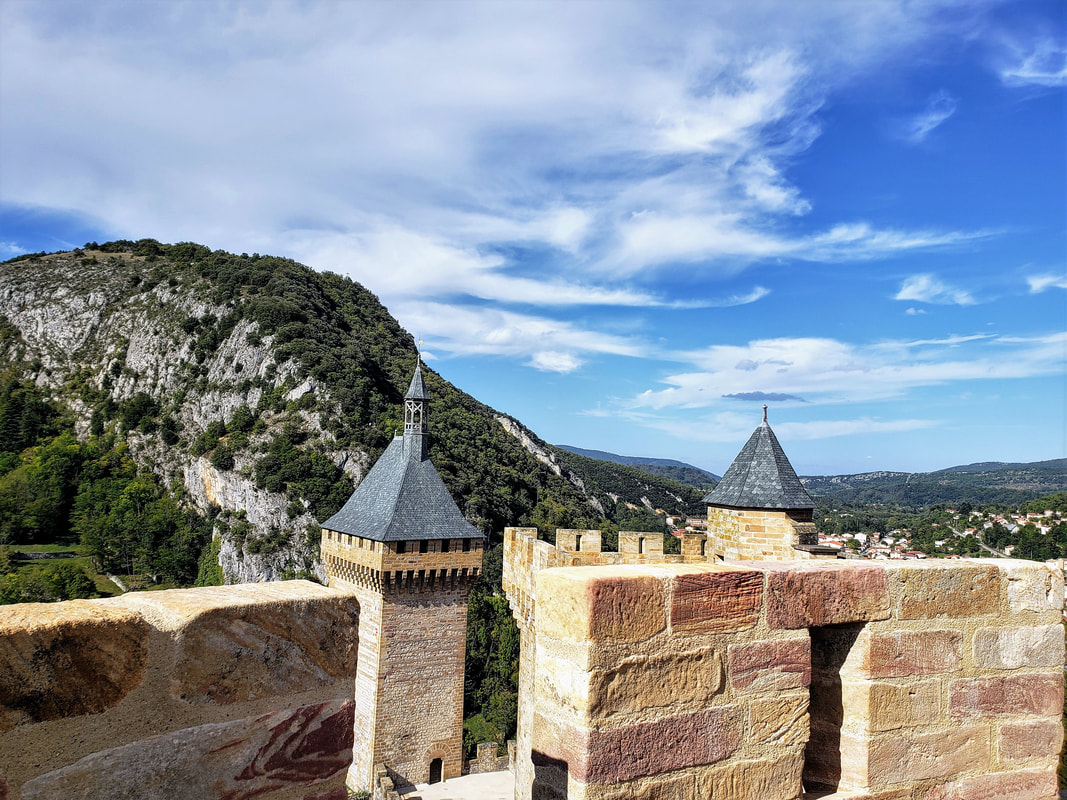


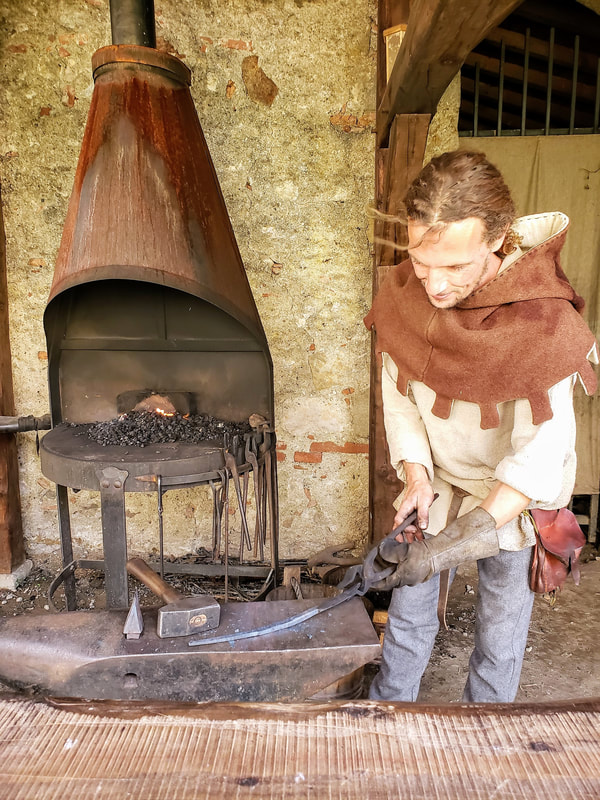



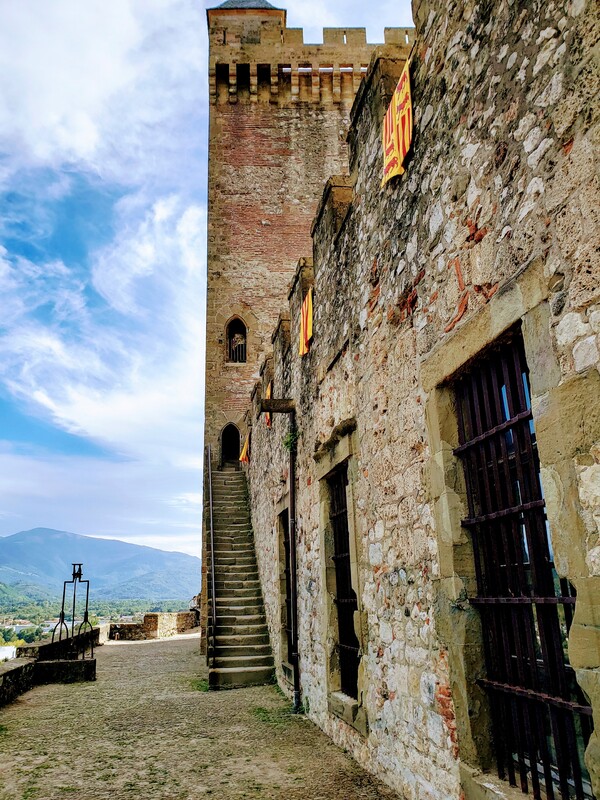



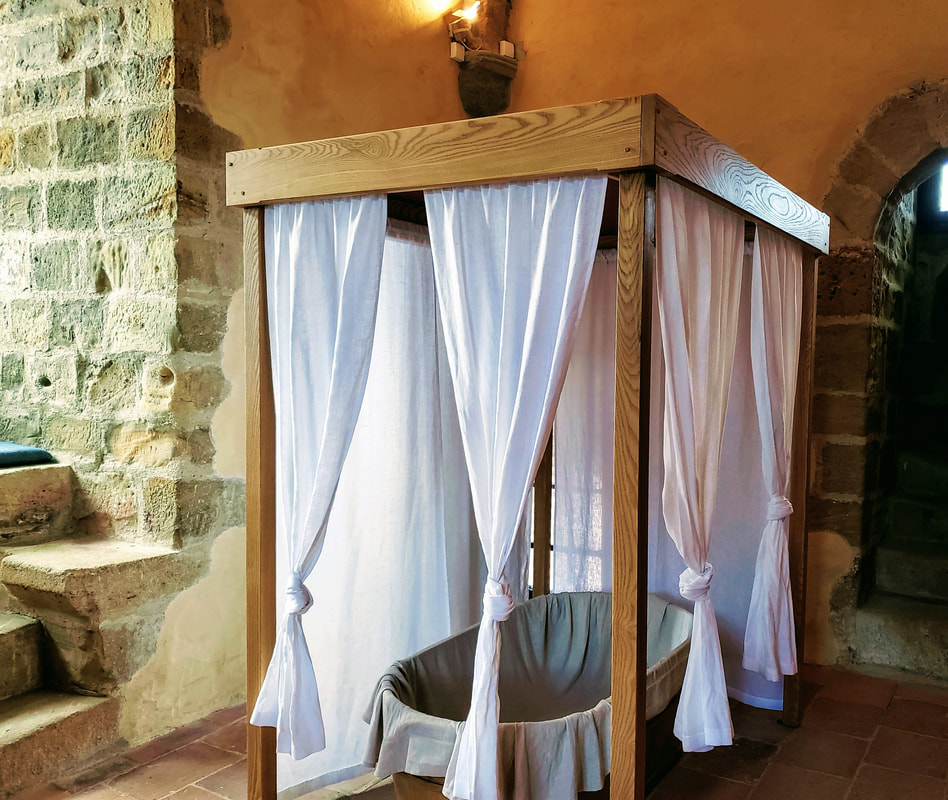



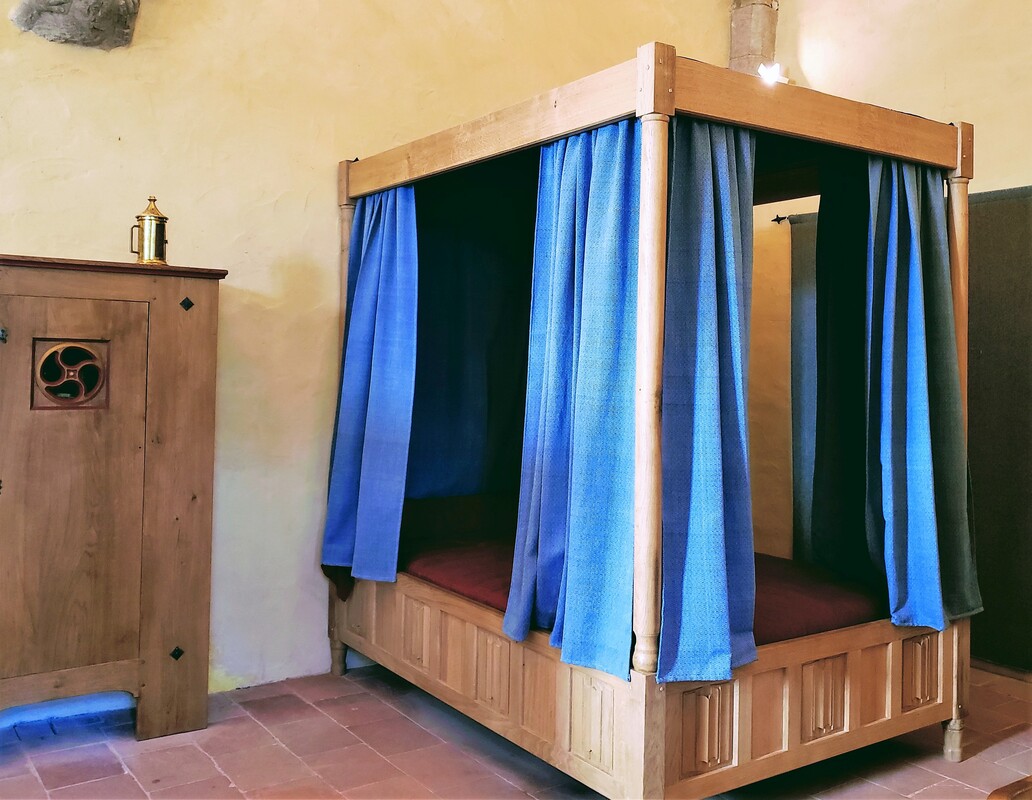



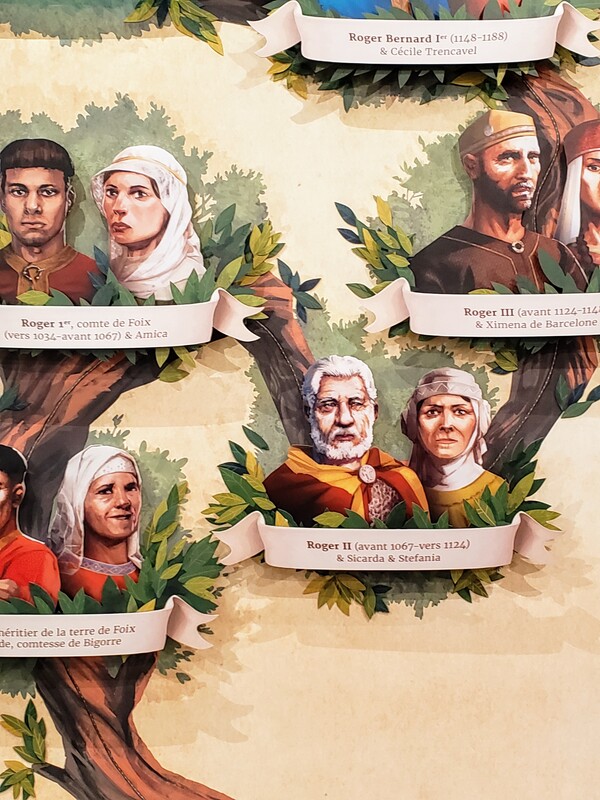
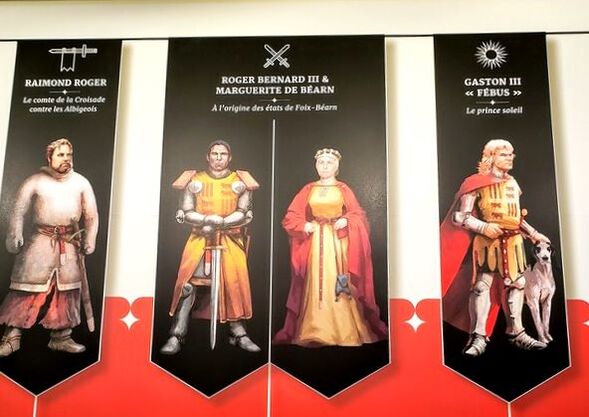

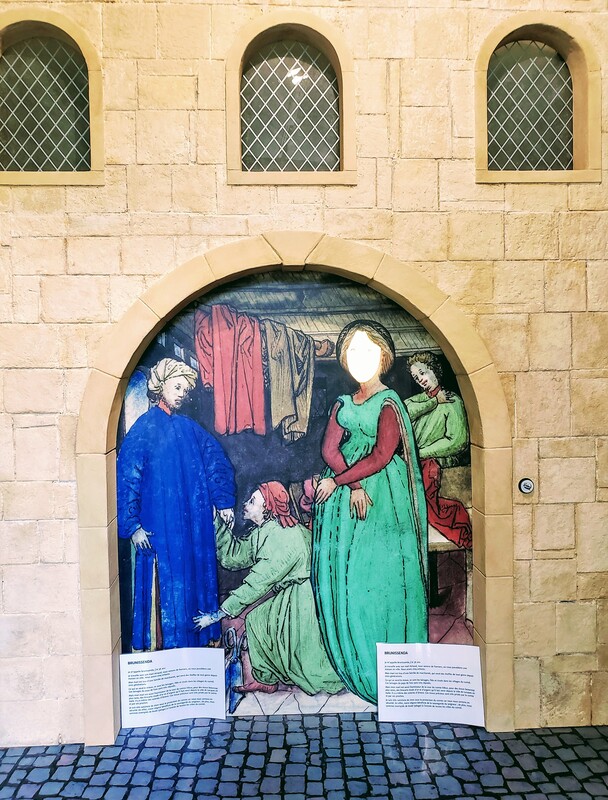

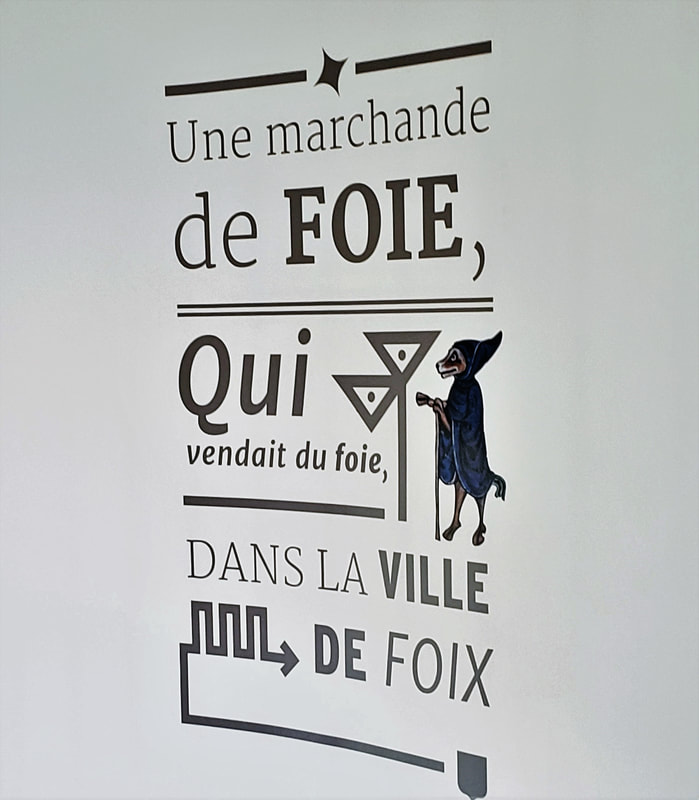
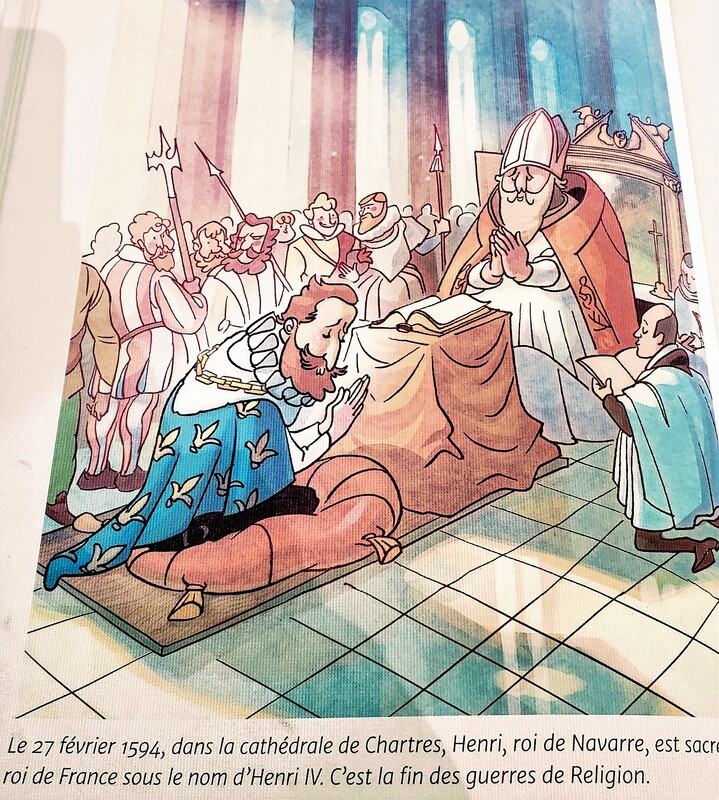

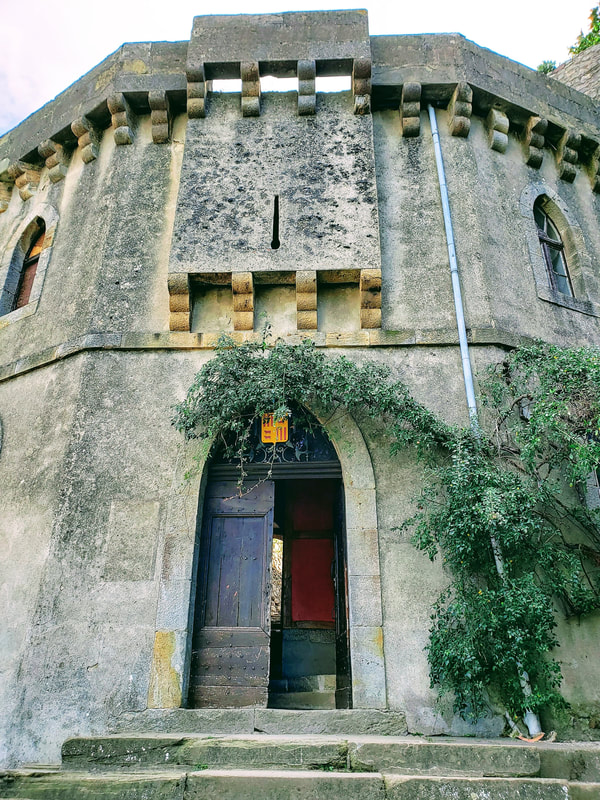
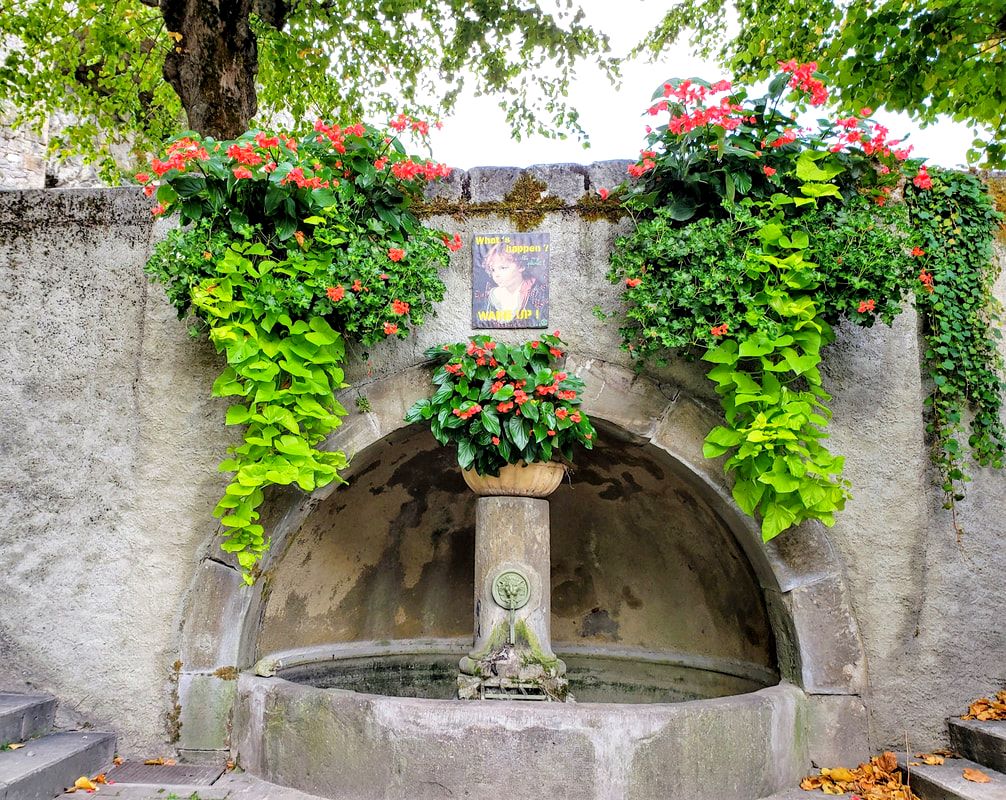
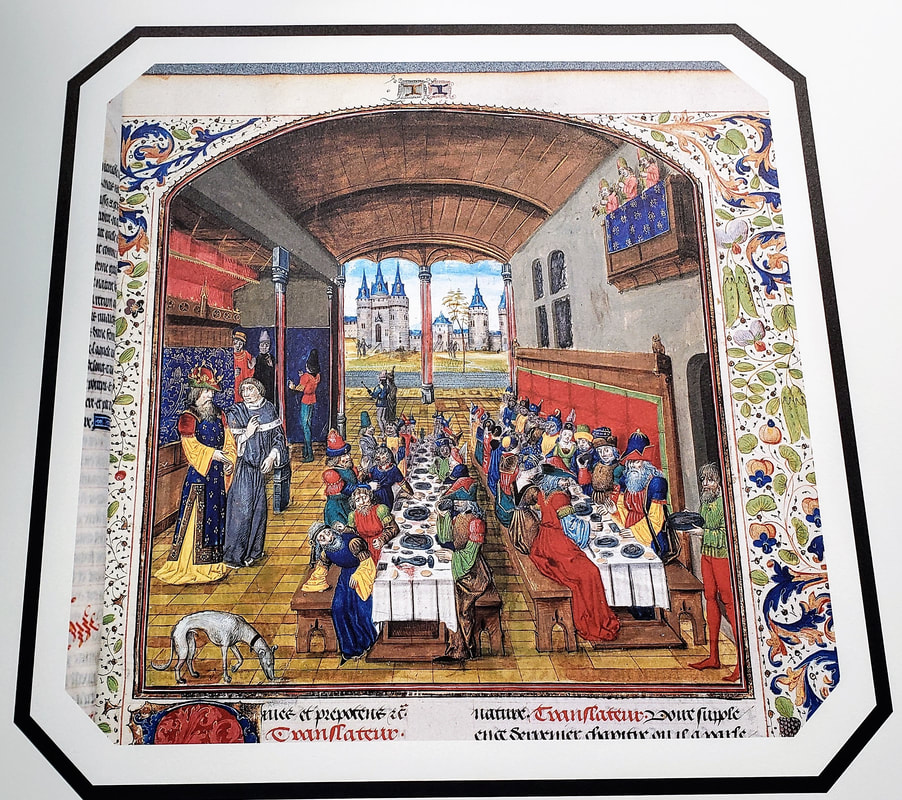

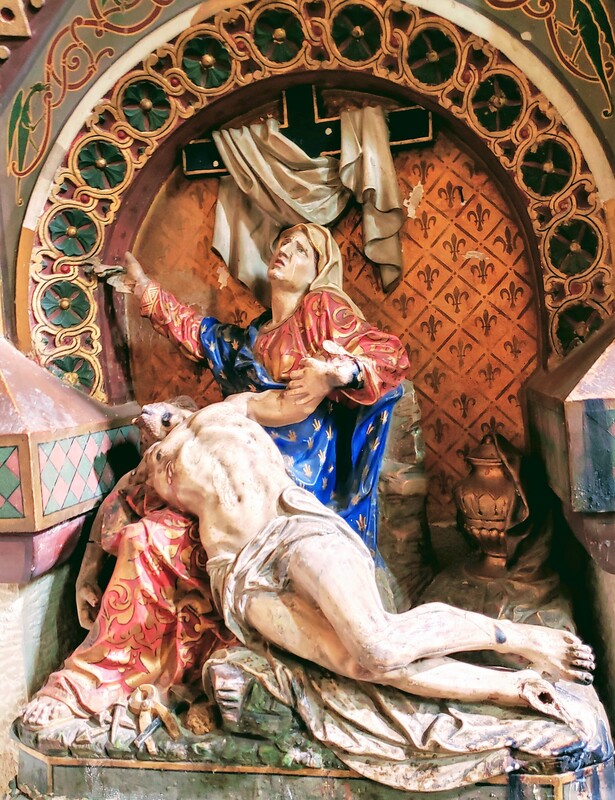
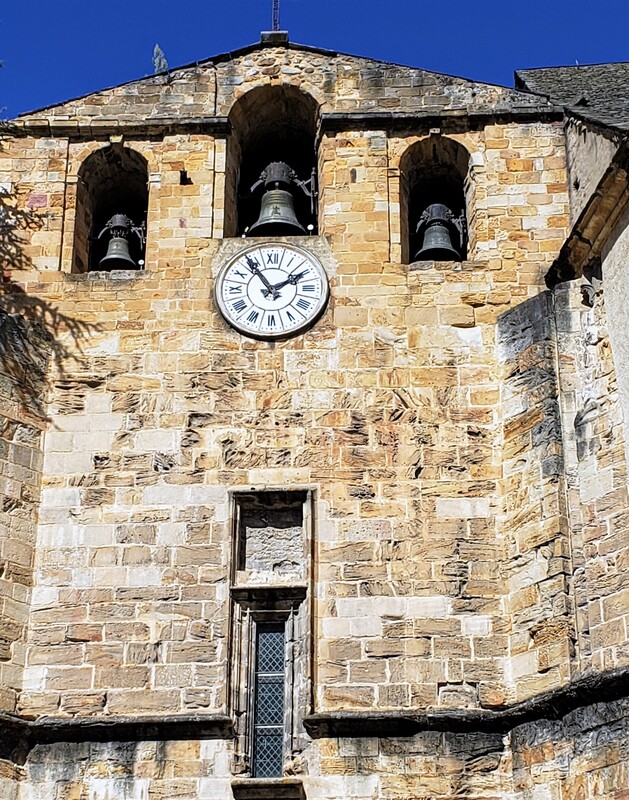




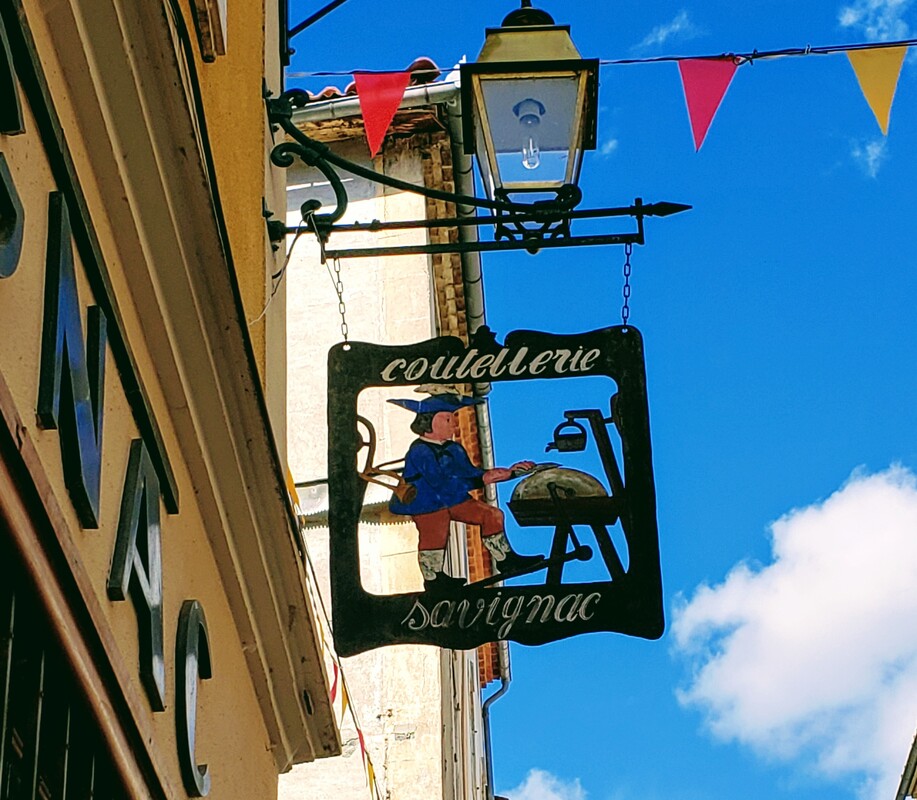



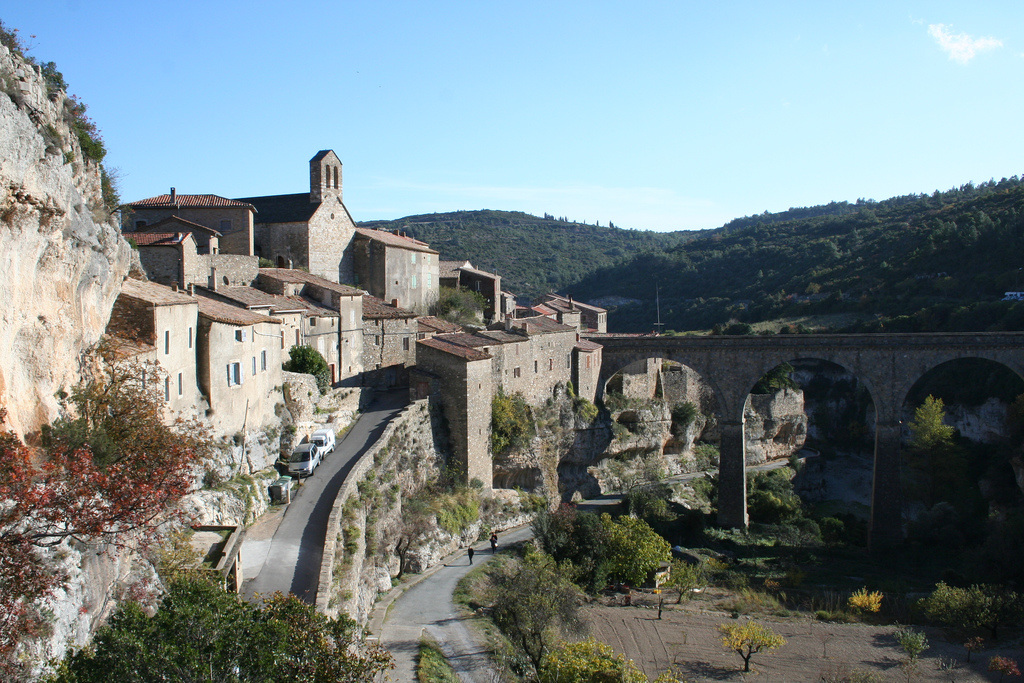

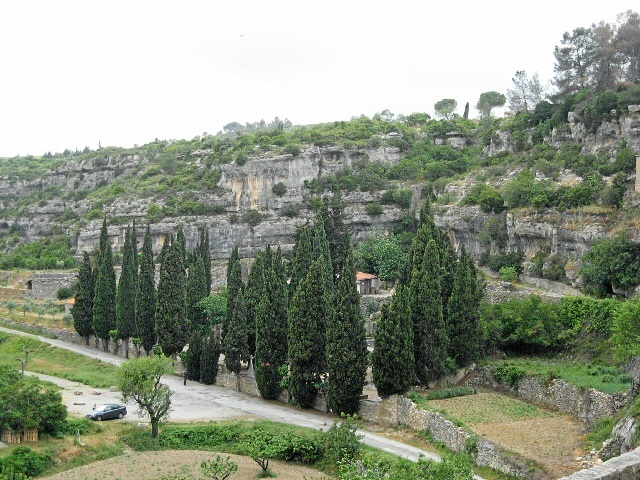
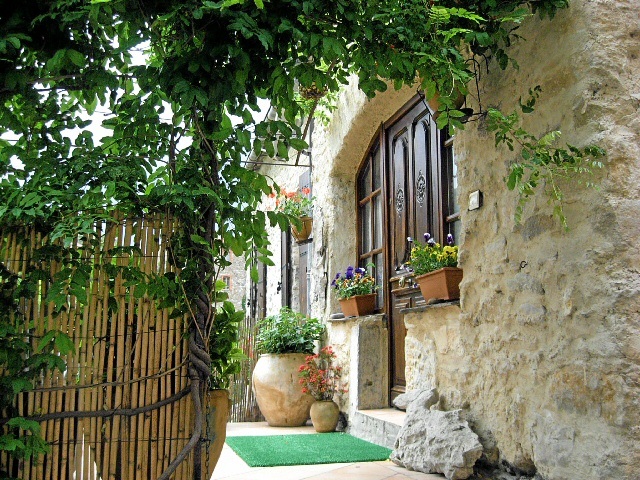



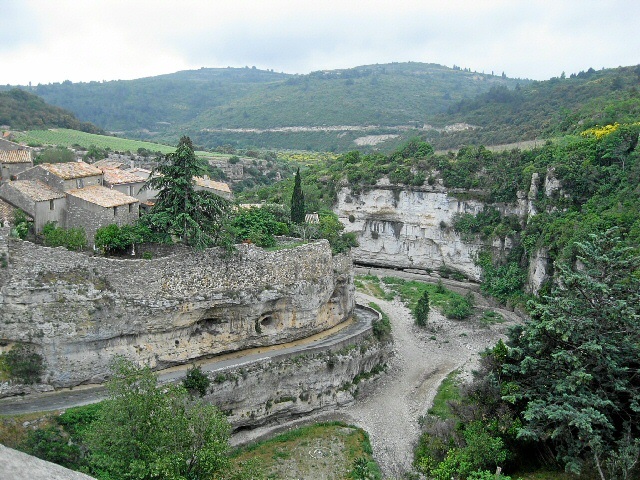
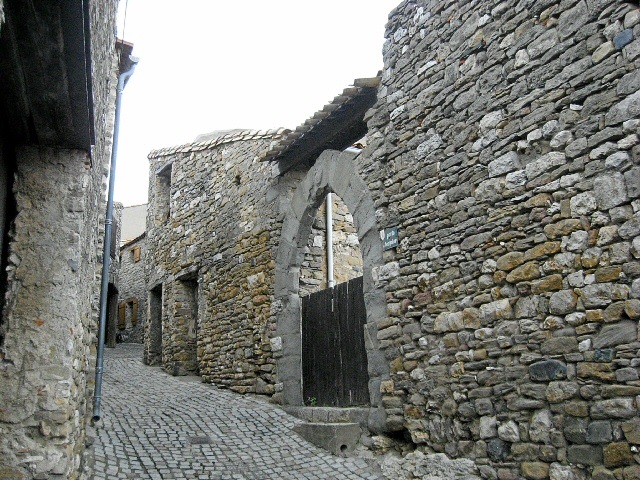





 RSS Feed
RSS Feed
